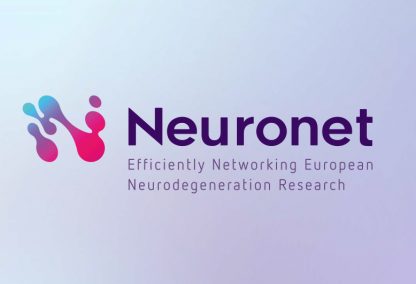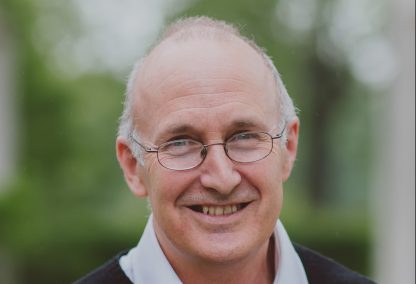The ROADMAP communications team carried out an interview with the Project Coordinator, Prof. John Gallacher from the University of Oxford.
He will tell us about ROADMAP’s focus, the importance of real-world evidence (RWE) and how data becomes evidence amongst other interesting aspects about the project.
What is ROADMAP’s focus?
ROADMAP focuses on the diagnosis of Alzheimer’s disease (AD) and the care associated with it. AD itself has a prodromal period, followed by symptoms, diagnosis, care and death. We are looking at the disease model, which will in principle be able to go all the way through its spectrum to death, but it is actually primarily focussed on the early detection of symptoms leading to diagnosis.
Why are you doing research on real-world evidence and real-world outcomes?
It all comes down to evidence of causation. What people would describe as the best evidence of causation is doing a randomised controlled trial. In these types of clinical trials, scientists aim to keep all factors constant, except for the intervention. They can therefore be more confident in inferring causation form the results of the study.
The problem is that we don’t live in a well-controlled real world. The real world we live in is full of all sorts of things like housing, economic and social problems, to name but a few. Moving from the conclusion “this compound is efficacious in a trial” to “this compound is similarly effective in the real world” is therefore a very big and usually unwarranted leap. We use data collected in an imperfect environment, such as electronic health records (EHR’s), cohorts and patient reported outcomes.
In this context we try to ask a very important question. Do we find evidence that is consistent with what is found in trials and can we use that evidence to go one step further and inform funding models?
How does data become evidence?
Data is typically a collection of numbers. This data can be turned into evidence in relation to a particular question (how numbers become meaningful). Typically this happens in some sort of course or process. It might be a disease course/process, for example, or a social course/process. Imagine a research question that aims to answer if X affects Y. This could be a cause or nexus you are looking at. It is the strength of the cause of inference (and the limitations of it), which enables data to become evidence.
What are the particular strengths of ROADMAP?
ROADMAP is very well established in terms of developing methods, with a much more thorough understanding of the RWE landscape. Once this is established, RWE needs to be used to answer specific questions. ROADMAP will address some straightforward questions as proof of concept. At the same time we are really looking forward to a potential stage 2 proposal where we can use this understanding and the infrastructure we developed to address a whole range of RWE issues.
What are the specific challenges you aim to tackle?
Going from a disease progression model to a health economic model is very difficult, because AD is a complex multifactorial condition. We identified a relatively simple model and once we have established that, we work out more sophisticated versions of it. Having done that, it will give us a basis to look at different regulatory environments as well as different caring environments to evaluate the cost of intervening in AD.
What is the overarching goal in this endeavour?
I think we need to have realistic estimates of cost, so we can achieve a social consensus amongst all the stakeholders over payment and care models for AD. Achieving that social consensus, which I think is the ultimate goal of all of these sorts of projects, would be a fantastic achievement.
How do you envisage a 2nd phase of ROADMAP?
During phase 1 we are laying a strong collaborative foundation with many stakeholders from such a broad set of communities and so many different technologies and we are probably the best placed Consortium globally to address specific questions. For phase 2, I would expect us to put in a very strong proposal and invite different communities to submit their research questions, do the analysis and provide the evidence to see how well these questions can be answered.
In some cases the questions can’t be answered very well and that will then give indications of what data needs to be collected. On the other hand, many questions will be answered very well and that will add to our ability to make funding decisions and identify further research priorities.
Stage 2 will include more databases from more countries so that we can confirm how different health economic models will work in different jurisdictions and different healthcare systems.
I think that ROADMAP is in a very strong position to help develop a consensus over payment and care models for AD. The precision medicine environment is fairly fast moving and old models of funding do not work, therefore we are looking forward to working with all the stakeholders to help arrive at a new consensus.
Receive the latest news. Click here to subscribe!
 New publication: Health economic modeling for Alzheimer's disease: Expert perspectives
16 Nov 2022
The successful development of an economic model for the evaluation of future Alzheimer's disease (AD) interventions is critical to accurately inform policy makers and payers....
New publication: Health economic modeling for Alzheimer's disease: Expert perspectives
16 Nov 2022
The successful development of an economic model for the evaluation of future Alzheimer's disease (AD) interventions is critical to accurately inform policy makers and payers....
 The Neuronet Coordination and Support Action releases updated Decision Tool for engagement with Regulatory and Health Technology Assessment bodies
09 May 2022
Madrid, 9 May 2022 – Today, the members of the
The Neuronet Coordination and Support Action releases updated Decision Tool for engagement with Regulatory and Health Technology Assessment bodies
09 May 2022
Madrid, 9 May 2022 – Today, the members of the
 Big Data 4 Better Outcomes: Recommendations for the European Health Data Space
16 Jul 2021
In light of our experience in various projects of the Innovative Medicines Initiative’s Big Data 4...
Big Data 4 Better Outcomes: Recommendations for the European Health Data Space
16 Jul 2021
In light of our experience in various projects of the Innovative Medicines Initiative’s Big Data 4...
 New publication: Conducting public involvement in dementia research: The contribution of the European Working Group of People with Dementia to the ROADMAP project
06 Apr 2021
Dementia outcomes include memory loss, language impairment, reduced quality of life and personality changes. Research suggests that outcomes selected for dementia clinical trials might not be the most important to people affected....
New publication: Conducting public involvement in dementia research: The contribution of the European Working Group of People with Dementia to the ROADMAP project
06 Apr 2021
Dementia outcomes include memory loss, language impairment, reduced quality of life and personality changes. Research suggests that outcomes selected for dementia clinical trials might not be the most important to people affected....



